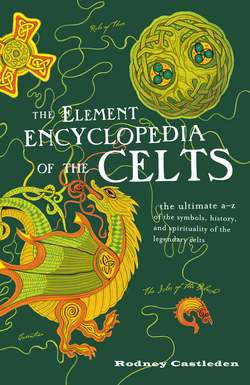Читать книгу The Element Encyclopedia of the Celts - Rodney Castleden - Страница 38
WHERE WAS CAMELOT?
ОглавлениеElsewhere, I have argued that Arthur was initially the sub-king of a small north Cornish territory called Trigg (meaning “three war-bands”), with his home at Castle Killibury, not far from the modern town of Wadebridge. Killibury was a small and discreetly defended hideaway that had a superb view down the Camel estuary, which Arthur probably used as his harbor. In fact imported Dark Age pottery wares have recently been discovered near the seaward end of the estuary.
It is highly significant that early Welsh tradition gives Kelliwic as the name of Arthur’s favorite residence; even the Welsh saw Arthur’s principal home as Castle Killibury. A Welsh Triad lists the places where Arthur held court in Three Tribal Thrones of the Island of Britain. The northern one was at Pen Rhionydd—a place that has not been identified, but thought to near Stranraer in Galloway. The Welsh throne was at St. David’s and the Cornish tribal throne was at Kelliwic. Kelliwic was firmly recognized as Arthur’s base long before any idea of Camelot came up. The poem Culhwch and Olwen mentions five times that Kelli Wic was Arthur’s port. An old name for Castle Killibury is Kelly Rounds and an Anglo-Saxon charter mentions a place called “Caellwic.”
Not far away is Tintagel Island. A significant amount of very high status and very expensive pottery imported from the Mediterranean confirms it as a royal focus of some kind. It was not a permanent settlement but a place for special occasions. The footprint carved into the living rock at the island’s summit marks it as the coronation place: the spot where kings of Trigg (north Cornwall), and perhaps kings of all Dumnonia, came to take their oath and assume the mantle of kingship. This was where Arthur drew his power from the stone (see Places: Tintagel).
Like other Dark Age and medieval kings, Arthur was always on the move. Kings had to peregrinate around their kingdoms in order to be seen by their subjects and maintain the bond of loyalty between king and subject.
Arthur had various muster points where the Dumnonian war-bands could gather before being marched east to engage the Saxons: Warbstow Bury and Lydford were two in the center of Dumnonia; South Cadbury was the major one close to the eastern border, the “war zone.”
One of the many mysteries surrounding Arthur is the location of Camelot, that place of special mystique. It is unlikely to be Castle Killibury. The name “Camelot” strongly suggests a connection with the Celtic war god, Camulos, and if Camelot was named for the war god it is likely to be associated with fighting and with gatherings of the war-bands. Camelot is elusive, for the simplest of reasons: it was not one place, but several. It was mobile; it was wherever Arthur was encamped with his warriors.
